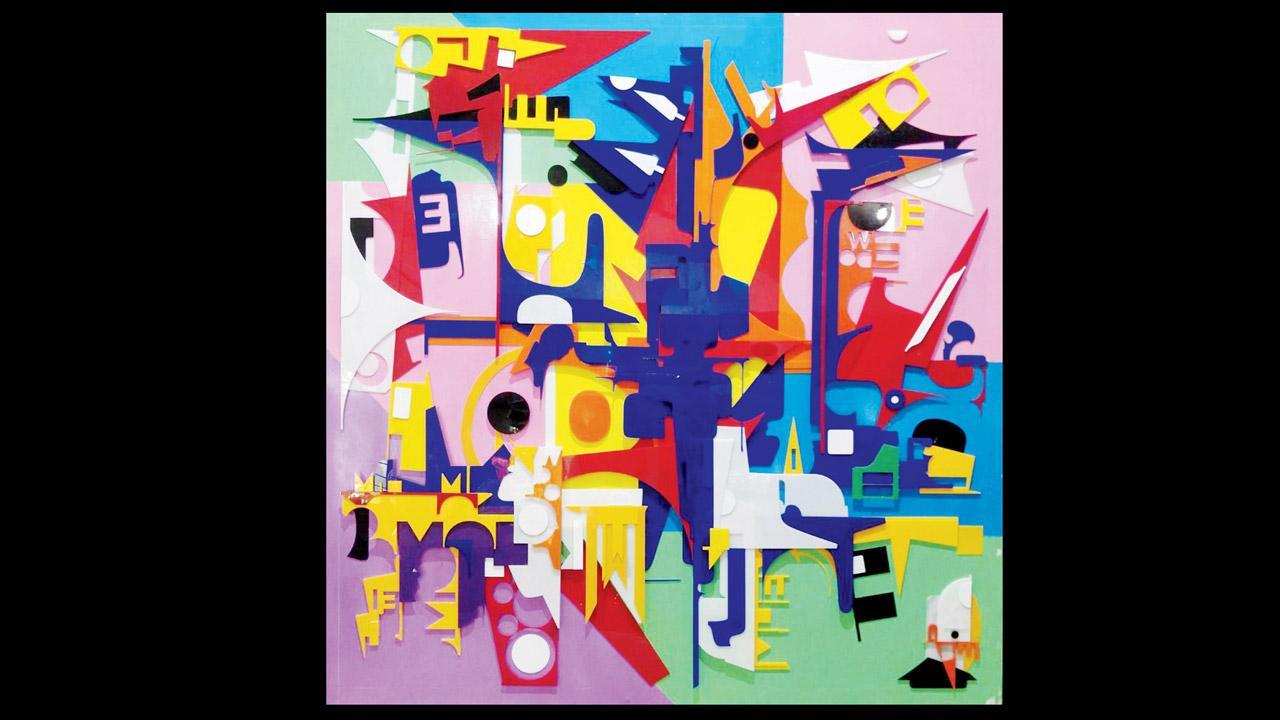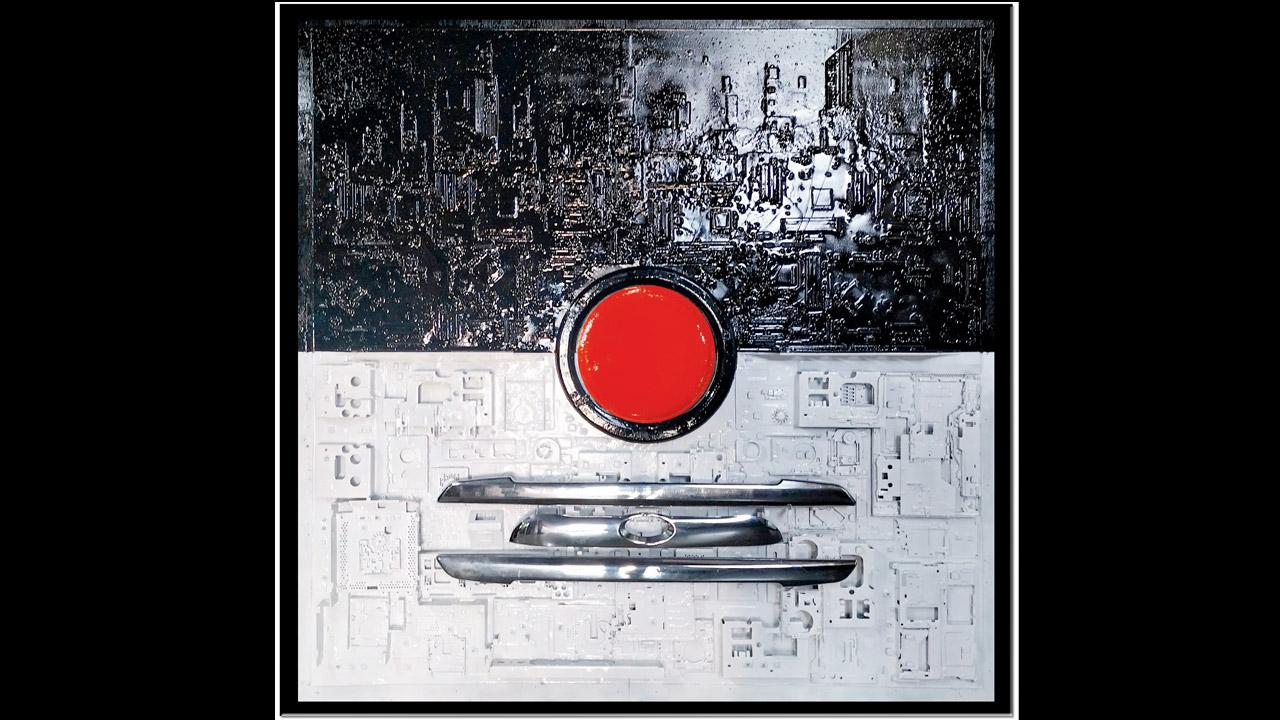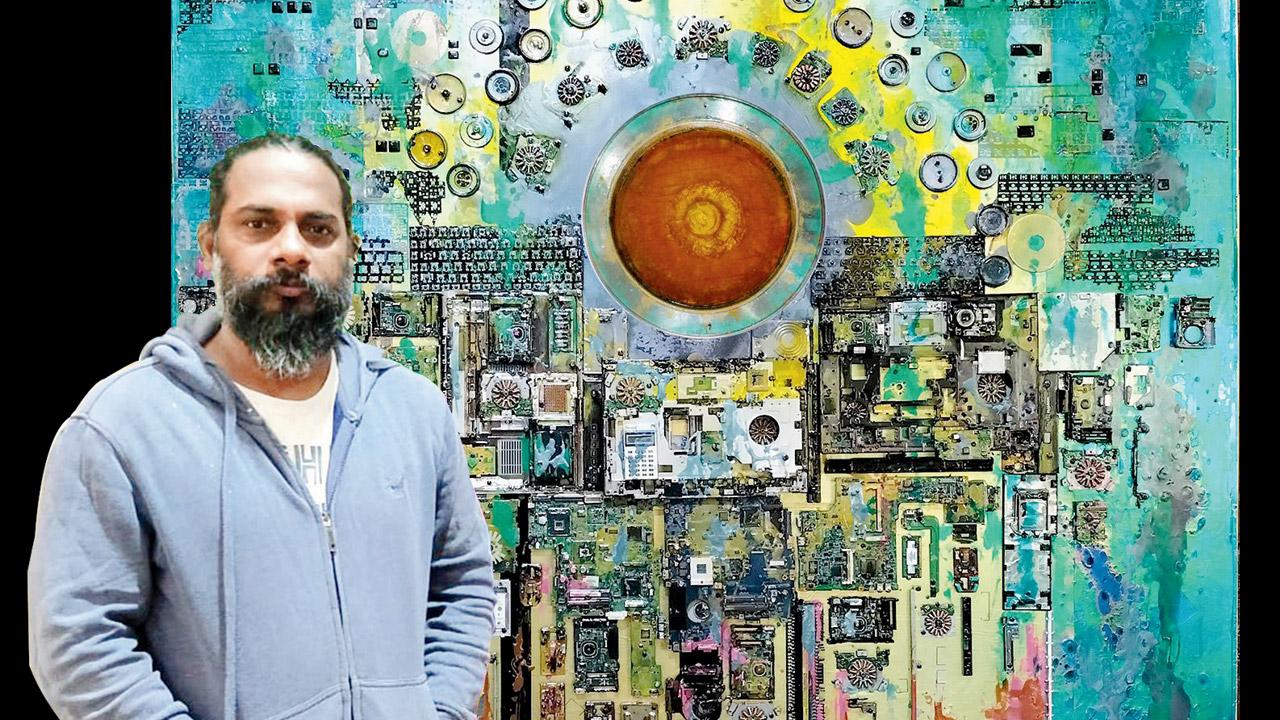Attend an exhibition by an artist who makes sculptures using scrap material, sending a message about discarding waste in the proper way

The exhibition features 12 artworks that Naatesan has created
It was while applying for an animation course at the National Institute of Design in Ahmedabad that Haribaabu Naatesan first laid the foundations of how he’d go on to express himself as an artist in the future. He wanted to do something different to impress his interviewers. So, he made two sculptures, of a crab and a spider, entirely out of scrap material including aluminium clothes hangers and deflated table-tennis balls. The legs of these sculptures could move, which made them suitable for animation films, and the interviewers were impressed enough to accept Naatesan into the premier institute.
ADVERTISEMENT

That set the ball rolling for a career that has eventually led to Irreversible 2.0, his new exhibition that’s on at Jehangir Art Gallery at the moment. All the sculptures and installations in it are made completely from electronic waste, such as motherboards, floppy disks and computer processors. Some of them are also interactive in nature. For example, there is one of an audio cassette that has a motion sensor fitted into it, which makes its wheels move when a visitor approaches the piece. It lets people travel back in time, Naatesan tells us, because they identify with an object that is now essentially a relic of the past. “It’s a sort of remembrance,” the artist says.
But it’s not that he always actively goes out looking for waste material to turn into art. More often than not, they find him instead. Naatesan shares that people in his housing society, for instance, donate their old TV remote controls and the like instead of discarding them. A friend who is a computer engineer also provides him with material regularly. Sometimes, it can even be a complete stranger who has heard of his work. Naatesan talks about a medicine company in Mumbai that couldn’t sell its stock due to the medicine, leading it to expire. “They got in touch with me and said that they have 3,000 containers that are packaging boxes made of cardboard, which they were looking to discard. I was eventually sent 1,500 of them, which I turned into a table that I keep in my studio,” he says.

Haribaabu Naatesan
He also explains his process, revealing how he avoids pre-visualising his pieces. Instead, he first segregates the material based on shape — whether round, square or triangular. “I work through these forms on my table. Sometimes, I create a composition that starts from the centre and then spreads across the frame. Other ones can start from the top and travel to the bottom. The whole piece evolves as I start putting it together, glueing or screwing in the different pieces, and each evolves in its own way,” he elaborates.
The idea, Naatesan adds, is to sensitise people about how important it is to discard waste in the right manner. “Sometimes, you see these plastic packets lying on the road, which end up clogging our drains,” he says, explaining why it’s important for them to end up at proper landfills. This is art with a message, in other words, and it’s one that we should heed if we are to ensure the longevity of our planet.
Till: January 31, 11 am to 7 pm
At: Jehangir Art Gallery, Kala Ghoda, Fort
Call: 22843989
 Subscribe today by clicking the link and stay updated with the latest news!" Click here!
Subscribe today by clicking the link and stay updated with the latest news!" Click here!








